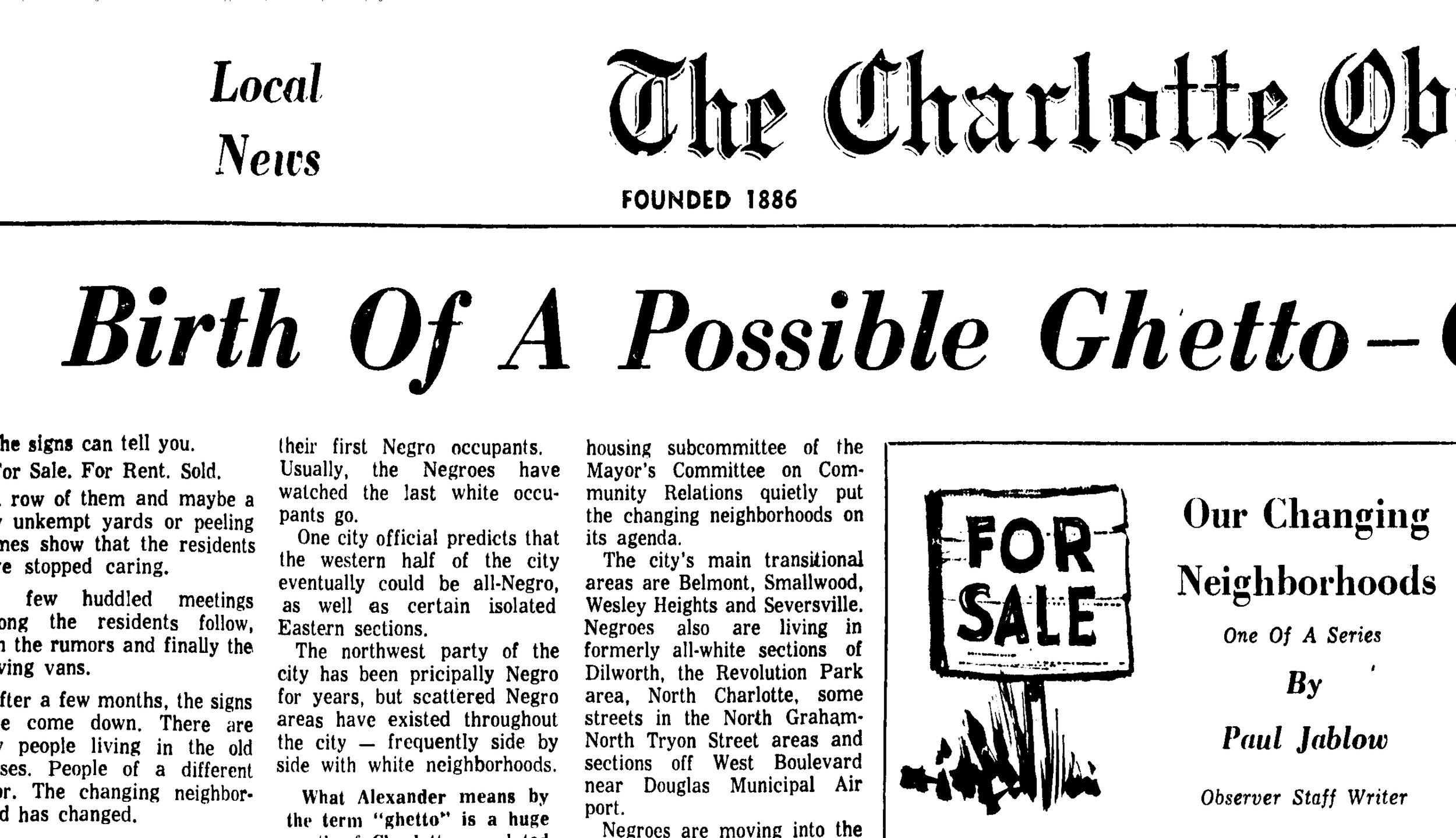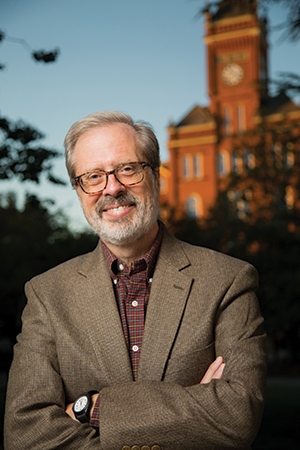Community Transformation
“Gentrification” has always been a complicated term in regards to the Historic West End, because for decades the area was a community where black and white families of different economic levels lived side by side. In the 1950’s and 1960’s most of the white residents left for the suburbs, and many black families that had been displaced from the Brooklyn neighborhood by urban renewal moved into formerly white and mixed neighborhoods like Seversville and Wesley Heights. When black families started moving in, “white flight” began in earnest. A 1966 Charlotte Observer article declared that some white families that were leaving had not cited lower property values, but the fact that they “just don’t want to live next door to Negroes or don’t want their children to.” That same year residents of all-white Wesley Heights circulated a letter warning their neighbors that a white neighbor had been evicted and that the “Negro” was moving in, seeking to provoke panic. By the year 2000, 96% of the population of the Biddleville neighborhood right around Johnson C. Smith University was African American.
Ruth Glass coined the term 'gentrification' in 1964 to describe what was happening in neighborhoods in London, England. At the time, she said, "One by one, many of the working class quarters have been invaded by the middle class — upper and lower ... Once this process of 'gentrification' starts in a district it goes on rapidly until all or most of the working class occupiers are displaced and the whole social character of the district is changed." In America, this "invasion" has often occurred along racial lines, and many older residents of the West End are alarmed by what they see as yet another threat to the sense of community and history that they have managed to build here. In a past marred by the stain of urban renewal, the desegregation and re-segregation of schools and neighborhoods, the destructive division of the highway, and other forces, “gentrification” is often seen as another form of forced removal.
In 1966, black city Councilman Fred Alexander feared a huge “negro ghetto” spreading out from the Northwest part of the city, and by the 1970’s these neighborhoods were already experiencing the effects of being surrounded by encroaching highways instead of good grocery stores and quality schools; boarded up homes and buildings, robberies, sexual assaults, and drugs became commonplace and increased into the 1980’s and 1990’s. The community’s businesses, instead of thriving with the patronage of Johnson C. Smith University students, slumped as those students often feared to venture out of the gates erected in the 1990’s when the crime in the area reached its crescendo. 1985 A “blight study” by city planners shows nearly half of the commercial structures in the area between the Brookshire Freeway and Interstate 85 were deteriorated.
Along the way, many broken promises and failed attempts at “renewal” occurred. In 1988 it was the “Biddle Village” project, part of the Project Catalyst Special Project Plan approved by Charlotte’s City council and adopted as a policy guide for public and private improvements in the area surrounding JCSU, including an urban-style pedestrian-friendly community with housing above storefronts. It never happened, and a 2006 Charlotte Observer article began with the words “Mention Beatties Ford Road, and many Charlotteans think: Crime. Blight. Unsafe.” This could have defined the public perception of the corridor for the previous 30 years, and it appeared right before the 2008 recession that slowed growth. The boom that began once the economy straightened, however, has finally made these changes manifest.
Since 2010, West End communities like Biddleville, Smallwood, Seversville, and Wesley Heights have experienced a rapid “recovery” as national housing trends in exploding Southern cities started to favor urban, walkable areas and neighborhoods with single-family homes in the shadow of the uptown skyline became more desirable. Charlotte is currently developing a streetcar line to run along the Beatties Ford Road corridor and an eventual mass transit line to connect uptown and the airport, and the West End finds itself the newest “hot neighborhood” in Charlotte’s urban explosion as the same white residents who abandoned the area in the 1960’s desire to return to uptown living. Mecklenburg County’s Tax Assessor’s Office, through a sample of property sale records in the west side neighborhoods, estimated that property values there have risen by an average of 44 percent since 2011.
The narrative is not completely driven by negativity, however, and to many the exploding growth of the communities around the West End offers hope and the promise of improvements in reduction of crime, delinquent properties, and neighborhood amenities that has gone unfulfilled for so long. Dorothy Counts-Scoggins, who made national headlines when she integrated Harding High School in 1957 and now lives across from JCSU, expressed the hope of many residents when she stated in a 2016 Charlotte Observer cover story on the changing West End that new people could help resurrect the neighborhood of her youth and bring an integrated mixture of folks with racial and economic differences that can be an example to other communities in a changing city.
It remains to be seen what impact these changes will have on the West End in the long run and how far down the Beatties Ford Road corridor they will go, but the coming of the transit line in the next years will certainly increase the pace of gentrification and development. The hope of residents and researchers here is that newcomers and long-time residents alike can use this opportunity to discover the rich legacy of an historic community of neighbors and change-makers that has survived and thrived despite over a century and a half of changes and fractures, and has no intention of fading away quietly.

















